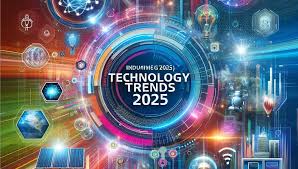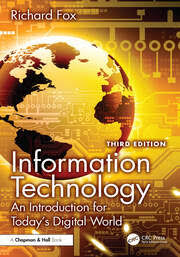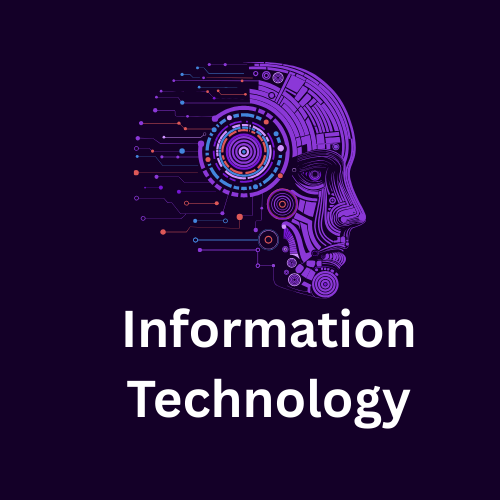Introduction
Ever sent a text, streamed a movie, or laughed at an autocorrect fail that turned “meeting” into “meowing”? Welcome to the wild world of information technology—the invisible force powering our digital lives. Let’s start with a mind-blowing stat: In 2025, global spending on information technology is projected to soar to $5.43 trillion, a 7.9% jump from last year, according to Gartner. That’s more money than the GDP of entire countries! From your smartwatch buzzing with notifications to hospitals saving lives with real-time data, information technology is the wizard behind the curtain, making modern magic happen.
But what is information technology, really? It’s not just for tech nerds in hoodies coding in dark rooms. It’s the backbone of how we work, play, and connect—whether you’re a teenager snapping selfies, a parent managing a smart home, or a grandparent mastering Zoom calls. In this adventure, we’ll unravel IT’s secrets with a sprinkle of humor (because who hasn’t cursed a frozen laptop?). Expect practical insights, fun stories, and tips for all ages, from curious kids to retirees. By the end, you’ll not only understand information technology but might just become the family’s go-to tech guru. Ready? Let’s dive in!
What is Information Technology?
Information technology, or IT, is like the Swiss Army knife of the digital age—versatile, essential, and occasionally confusing when it malfunctions. Let’s break it down without making your head spin like a buffering icon.
Defining IT in Simple Terms
At its heart, information technology is about using computers, software, networks, and systems to create, store, process, and share data. Think of it as the middleman between raw data (like a pile of numbers) and useful information (like your bank balance or a weather forecast). Unlike computer science, which gets lost in algorithms and theoretical geekery, IT is practical—it’s about making tech work for real people.
Picture this: You’re ordering pizza online. Information technology powers the app (software), runs on your phone (hardware), connects to the restaurant via the internet (networks), and stores your order history (data management). It’s seamless—until the app crashes mid-order, leaving you hangry. That’s IT in action (and occasionally inaction)!
The Evolution of IT
Information technology has come a long way since its clunky beginnings. In the 1940s, computers like ENIAC were the size of small houses, used for wartime math, and had less power than your smartwatch. By the 1980s, personal computers like the IBM PC brought IT into homes, turning basements into early tech hubs. The 1990s internet boom introduced email, websites, and dial-up modems that screeched like banshees.
Fast forward to 2025, and information technology is everywhere—cloud computing stores your photos, AI recommends your next binge-watch, and IoT (Internet of Things) lets your fridge nag you about milk. One hilarious hiccup? The Y2K panic, when folks feared computers would reset to 1900, crashing everything. Spoiler: Nothing happened, but IT teams earned their coffee that year! For a deeper dive, check our tech history timeline.
Read more: Top 10 Technologies To Learn In 2025 | Top Trending …
Why IT Matters Today
Today, information technology isn’t just a tool—it’s a lifestyle. Businesses rely on it for operations, schools use it for learning, and even your morning coffee order depends on it. IT drives efficiency, connectivity, and innovation, but it’s not perfect. Ever had your Wi-Fi drop during a critical Zoom call? That’s IT reminding us it’s still human (or at least programmed by humans). With $5.43 trillion fueling its growth, information technology shapes how we live, work, and laugh at tech fails.
Key Components of Information Technology
To understand information technology, think of it as a pizza: each component—hardware, software, networks, and data systems—is crucial for the perfect slice. Let’s explore these ingredients.
Hardware in IT
Hardware is the physical stuff you can high-five (or accidentally spill coffee on). It includes computers, servers, routers, and peripherals like keyboards. Modern hardware, like solid-state drives (SSDs), makes data processing faster than ever—goodbye, spinning hard drives that sounded like a jet engine.
In businesses, servers handle massive workloads, like processing millions of online orders during Black Friday. At home, your laptop or gaming console is hardware powered by information technology. Fun fact: Early computers used punch cards for data—imagine misplacing one and losing your whole project!
Software Essentials
Software is the brain, telling hardware what to do. It’s split into system software (like Windows or Linux, which runs your device) and application software (like Zoom or Photoshop, for specific tasks). Software development, a key IT field, creates everything from mobile apps to enterprise tools.
Ever had an app freeze during a heated gaming session? That’s software throwing a tantrum. LSI keyword alert: Software enables data processing, turning raw numbers into insights, like when Spotify curates your perfect playlist. For more, see our software basics guide.
Networks and Connectivity
Networks are the highways of information technology, letting devices talk to each other. Local area networks (LANs) connect office computers, while wide area networks (WANs) link global systems. The internet? That’s the ultimate WAN, powered by network security to keep hackers at bay.
Without networks, remote work would be a pipe dream. Fun story: In 1971, the first email was sent—just a test message, but it sparked a revolution. Now, we send billions daily, thanks to information technology. Need a secure home network? Check our Wi-Fi setup guide.
Data Management Systems
Data management is the unsung hero of IT, organizing massive datasets for easy access. Databases, like those in CRM systems, store customer info for businesses. Ever wonder how Amazon remembers your last 20 searches? That’s data management at work.
Modern systems use cloud databases for scalability, ensuring data processing is fast and reliable. But beware: Poor data management can lead to chaos—like when a retailer’s system mixes up orders, sending you cat food instead of headphones. LSI keyword: big data.
The Role of Information Technology in Society
Information technology isn’t just for techies—it’s woven into the fabric of society, from boardrooms to classrooms to your grandma’s video calls. Let’s see how it shapes our world, with a chuckle for those inevitable tech mishaps.
IT in Business
In business, information technology is like oxygen—essential and invisible until it’s gone. Enterprise resource planning (ERP) systems streamline operations, while customer relationship management (CRM) tools track client data. IT powers analytics, predicting trends like “will glitter sneakers sell in 2026?”
Without IT, businesses would be buried in paperwork. Fax machines? Ancient history, thanks to digital tools. But tech fails happen—like when you accidentally email your boss a GIF of a dancing llama instead of a quarterly report. Embarrassing, but recoverable! Learn more from IBM’s IT insights.

IT in Education
Education has been flipped upside down by information technology. Platforms like Google Classroom and Zoom make learning global—students in rural areas can join Ivy League webinars. Interactive apps teach kids math through games, while adults earn degrees online.
Data management tracks student progress, personalizing lessons. Funny side: Virtual classes mean sweatpants are the new dress code—just don’t stand up mid-call! For top edtech tools, read our edtech guide.
IT in Healthcare
Healthcare leans heavily on information technology, from electronic health records (EHRs) to telemedicine. AI diagnostics spot diseases faster than ever, and wearable devices monitor vitals in real-time. During pandemics, IT enabled contact-tracing apps to curb spread.
Glitches can be comical—like when a fitness tracker flags your dance party as a heart attack. Still, IT saves lives daily through efficient data processing. LSI keyword: telemedicine.
IT in Everyday Life
From smart fridges to voice assistants, information technology makes daily life smoother. Your GPS app navigates rush hour, while streaming services queue up your favorite shows. Social media? That’s IT connecting you to friends (and endless cat videos).
But tech isn’t perfect. Ever had autocorrect turn “I’m busy” into “I’m buzzy”? IT’s human side keeps us laughing. It’s also inclusive—apps help seniors stay connected and kids learn coding.
Emerging Trends in Information Technology
Information technology moves faster than a viral TikTok dance. Let’s explore the hottest trends shaping 2025 and beyond, with LSI keywords like artificial intelligence and cloud computing.
AI and Machine Learning
Artificial intelligence (AI) is IT’s superstar, teaching machines to think. Machine learning, an AI subset, powers Netflix recommendations and self-driving cars. It’s all about data processing on steroids—analyzing patterns to predict outcomes.
AI’s not flawless, though. Once, an AI mistook a chihuahua for a muffin (true story!). The future? Smarter systems, but humans will always call the shots. Want to learn AI? Check our AI basics post.
Read more: The Top 5 Technologies to learn in 2025
Cloud Computing Revolution
Cloud computing stores data online, ditching bulky servers. Services like AWS or Google Cloud offer scalability and cybersecurity. Businesses save millions by going cloud-native, and you can access files from anywhere—no more lost USB drives.
Ever had a cloud app save your work mid-crash? That’s IT magic. Explore more in Gartner’s cloud reports.
Cybersecurity Challenges
As information technology grows, so do threats. Cybersecurity protects against hackers, phishing, and ransomware. In 2025, cyberattacks cost billions yearly, per Cybersecurity Ventures. Network security tools like firewalls are critical.
Funny fail: A company once fell for a phishing email promising free donuts. Lesson? Train employees! Here’s a quick table of cybersecurity tips:
| Tip | Why It Matters |
|---|---|
| Strong passwords | Prevents unauthorized access |
| Two-factor authentication | Adds an extra security layer |
| Regular updates | Patches vulnerabilities |
| Avoid suspicious links | Blocks phishing attempts |
| Frequent backups | Saves data from ransomware |
Quantum Computing Potential
Quantum computing is IT’s next frontier, solving problems too complex for traditional computers. It’s still early, but it could revolutionize data processing for drug discovery or cryptography. Imagine cracking passwords in seconds—exciting, but scary for cybersecurity!
Downside? Quantum tech is pricier than a celebrity wedding. Still, it’s a game-changer on the horizon.
Careers in Information Technology
Dreaming of a tech career? Information technology offers paths for everyone, from coders to communicators. Let’s explore the opportunities and skills needed.
Popular IT Jobs
IT jobs are booming, with roles like:
- Software Developers: Build apps and systems.
- Cybersecurity Analysts: Fight hackers.
- Network Administrators: Keep connectivity smooth.
- Data Scientists: Analyze big data for insights.
Per the U.S. Bureau of Labor Statistics, IT jobs pay over $100K on average, with 11% growth projected through 2030. Bonus: Many are remote—hello, pajama workday!
Skills for IT Success
IT demands technical and soft skills. Learn coding (Python, Java), cloud computing, or network security. Soft skills like explaining tech to non-experts (without jargon) are key. Ever tried teaching your grandma to use WhatsApp? That’s an IT skill!
Certifications like CompTIA or AWS boost resumes. See our IT certification guide.
How to Start in IT
No degree? No problem! Start with online courses on platforms like Coursera. Entry-level roles like helpdesk technician teach basics. Kids can try coding apps, while seniors can learn IT for fun—like managing smart home devices.
Pro tip: Stay curious. IT evolves fast, so keep learning to stay ahead.
The Future of Information Technology
What’s next for information technology? Buckle up—it’s a wild ride.
What Lies Ahead
By 2030, expect AI to personalize everything, from shopping to healthcare. The Internet of Things will connect billions of devices, making cities smarter. Quantum computing might crack unsolvable problems, per Wikipedia’s IT overview.
Challenges? Automation may disrupt jobs, but it’ll create new ones, like AI ethics specialists. Big data will drive innovation but managing it will be key.

Ethical Challenges
Privacy is a hot issue. With data breaches rising, information technology must balance convenience and security. Ever got a creepy ad for something you just mentioned? That’s IT’s ethical gray zone.
Another concern: AI bias. If systems learn from flawed data, they can make unfair decisions. IT pros must ensure fairness and transparency.
Conclusion
We’ve taken a large number of words romp through information technology, from its roots in room-sized computers to its role in 2025’s $5.43 trillion tech boom. We’ve explored hardware, software, networks, and data management, laughed at tech fails (autocorrect, anyone?), and marveled at trends like artificial intelligence and cloud computing. IT powers businesses, transforms education, saves lives in healthcare, and makes daily life a breeze—pajamas included.
Whether you’re a kid coding your first app or a retiree mastering FaceTime, information technology is for everyone. As it evolves, it’ll bring smarter cities, ethical challenges, and endless opportunities. So, what’s your IT story? Drop your funniest tech mishap or favorite IT tool in the comments below and subscribe for more tech tips to stay ahead in this digital adventure!
FAQs
What is information technology?
Information technology (IT) involves using computers, networks, and software to manage, process, and share data. It includes hardware like servers, software like apps, and systems for data processing. IT powers daily tasks like online banking and ensures businesses run smoothly, distinct from theoretical computer science.
What are examples of information technology?
IT examples include smartphones for calls, cloud storage for files, databases for data management, and cybersecurity tools like firewalls. Apps like Zoom, GPS navigation, and even smart home devices rely on IT to process data and connect users seamlessly.
How does IT differ from computer science?
Information technology applies tech for practical solutions, like network security or system administration. Computer science focuses on theory, algorithms, and innovation, like creating AI. IT manages existing systems; CS builds new ones, often requiring deeper math knowledge.
Is information technology a good career?
Yes! IT offers high salaries (often $100K+), remote work, and roles like software development or cybersecurity. With 11% job growth projected (BLS), it’s ideal for all ages. Continuous learning is key due to trends like cloud computing.
What’s the future of information technology?
IT’s future includes AI personalization, IoT for smart cities, and quantum computing for complex data processing. Cybersecurity will grow as threats rise. Ethical issues like privacy and job automation will shape Its role in society.
Read more: AI in Healthcare: Boon or Risk? Best Guide 2025

